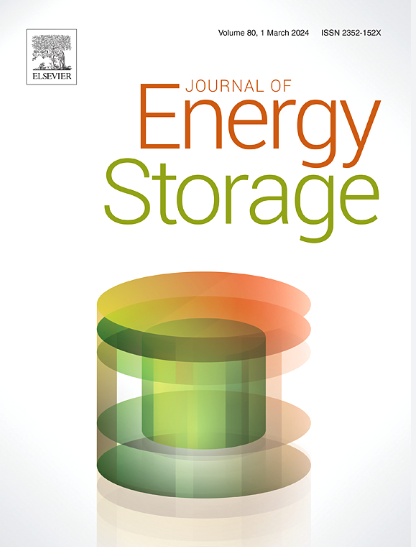Untangling the design of single-atom Zn catalyst for superior performance in lithium-sulfur batteries
IF 8.9
2区 工程技术
Q1 ENERGY & FUELS
引用次数: 0
Abstract
The sluggish kinetics of electrochemical reaction and the shuttle effect of sulfur species represent significant challenges hindering the advancement of lithium‑sulfur batteries (LiSBs). In this study, we propose a “tall building on flat ground” strategy to synthesize a single-atom Zn catalyst (MXene-NPC-Zn), where nitrogen-doped porous carbon (NPC) serves as the “tall buildings”, while MXene acts as the foundational “flat ground” supporting the porous carbon. This engineered microstructure provides a large surface area for the deposition of electrochemically inert sulfur and Li₂S while effectively stabilizing Zn single atoms. The incorporation of Zn single atoms enhances catalytic activity, accelerates sulfur species conversion, and facilitates rapid electron transport and efficient lithium-ion transfer during charge-discharge cycles. Consequently, LiSBs with the MXene-NPC-Zn modified separator achieve a high reversible capacity of 1407.3 mAh g−1 at 0.2C and exhibit stable cycling performance at 1C with a low-capacity decay of 0.071 % per cycle. These findings underscore the potential of the single-atom catalyst, synthesized using the “tall building on flat ground” approach, as a promising material for improving the performance of LiSBs.

解开单原子锌催化剂在锂硫电池中的设计难题
电化学反应的缓慢动力学和硫离子的穿梭效应是阻碍锂硫电池发展的重大挑战。在本研究中,我们提出了“平地上建高楼”的策略来合成单原子Zn催化剂(MXene-NPC-Zn),其中氮掺杂多孔碳(NPC)作为“高楼”,而MXene作为支撑多孔碳的基础“平地”。这种工程结构为电化学惰性硫和Li₂S的沉积提供了大的表面积,同时有效地稳定了Zn单原子。Zn单原子的加入提高了催化活性,加速了硫的转化,促进了充放电循环过程中电子的快速传递和锂离子的高效转移。因此,采用MXene-NPC-Zn改性隔板的lisb在0.2C时具有1407.3 mAh g−1的高可逆容量,并且在1C时具有稳定的循环性能,每个循环的低容量衰减为0.071%。这些发现强调了使用“平地上的高楼”方法合成的单原子催化剂的潜力,作为一种有希望改善lisb性能的材料。
本文章由计算机程序翻译,如有差异,请以英文原文为准。
求助全文
约1分钟内获得全文
求助全文
来源期刊

Journal of energy storage
Energy-Renewable Energy, Sustainability and the Environment
CiteScore
11.80
自引率
24.50%
发文量
2262
审稿时长
69 days
期刊介绍:
Journal of energy storage focusses on all aspects of energy storage, in particular systems integration, electric grid integration, modelling and analysis, novel energy storage technologies, sizing and management strategies, business models for operation of storage systems and energy storage developments worldwide.
 求助内容:
求助内容: 应助结果提醒方式:
应助结果提醒方式:


